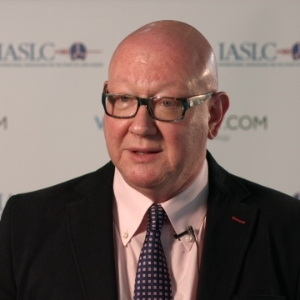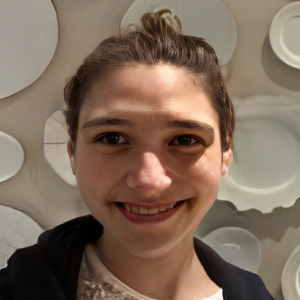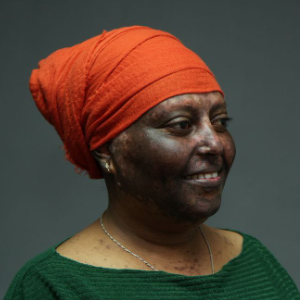Sergei A Grando, University of California Irvine, United States
Pemphigus vulgaris (PV) is a potentially lethal mucocutaneous blistering disease characterized by IgG autoantibodies (AuAbs) binding to keratinocytes (KCs) and inducing devastating blisters affecting oral mucosa and, sometime, also the skin. Most PV patients develop AuAbs against [....] » Read More





































































Title : The new physiopathology of cellulite
Gustavo Hector Leibaschoff, World Society of Cosmetic Gynecology, United States
Will be Updated Soon...
Title : Integrating personalized and precision medicine into dermatology clinical practice securing ITS potential to get skin diseases cured and to revolutionize dermatology
Sergey Suchkov, National Center for Human Photosynthesis, Mexico
Personalized & Precision Medicine (PPM) - driven dermatology uses individualized dermatologic disease-directed targeted therapy for the management of dermatoses and for the evaluation and therapy of cutaneous malignancies. For instance, the pathologic diagnosis of a pigmented [....] » Read More
Title : Perspectives on healthy skin aging and pre-aging concepts
Georgios Stamatas, SGS France, France
The evolution of classic anti-aging strategies towards "Best Aging" and "Healthy Aging" reflects a deeper understanding of skin health and vitality throughout various life stages. This shift emphasizes the importance of tailored approaches in skincare, prompti [....] » Read More
Title : How to correct cosmetic procedures gone wrong
Bharti Magoo, Golden Touch Clinic, India
Cosmetic procedures touted as non-invasive or minimally invasive can sometimes result in complications or unsatisfactory outcomes, even when the physician has performed the procedure skillfully, and to the best of their ability. As the aesthetic field continues to grow rapidly, a [....] » Read More
Title : Dermatology and phenomenology: How lived experiences of dermatological conditions should shape our practice
Sophie Ma, Imperial College London, United Kingdom
Background: Dermatological conditions are widely recognized for their significant impact on self-esteem and mental well-being, yet their psychological dimensions are often overlooked in clinical practice (1). Chronic and visible conditions such as eczema, psoriasis, acne, an [....] » Read More
Title : Effectiveness and safety of outpatient dermatosurgical procedures
P Cramer, Dres Cramer, Krosta & Kost, Germany
With the rising preference for outpatient care in dermatosurgery due to its advantages such as shorter waiting times, reduced administrative burden, and quicker reintegration into the patient’s normal environment, it becomes increasingly important to evaluate its safety pro [....] » Read More
Title : The role of artificial intelligence in aesthetic medicine
Irina Poleva, Compagnie Generale des Hospitaux, Italy
This presentation explores the transformative integration of Artificial Intelligence (AI) into aesthetic medicine, focusing on its impact on skin assessment, treatment planning, and patient engagement. It highlights AI's capacity to enhance precision, efficiency, and outcomes [....] » Read More
Title : Improvement of facial beauty by a non-invasive cosmetic approach using a miniprotein
Chajra Hanane, Activen Sa, Switzerland
One of the most easily recognized aspects of beauty is the shape of the face, which can convey age, gender, and attractiveness. In women, an oval facial shape is considered attractive; however, this structure is significantly altered with age due to skin laxity. One solution to p [....] » Read More
Title : Abdominal hydrolipoclasia today: Global trends, innovations, and clinical reflections
Yazbek Tatiana Gonzalez Granados, Renew Harmony Clinic, Netherlands
Abdominal hydrolipoclasia is a minimally invasive technique for localized fat reduction that combines infiltration of hypotonic solution followed by ultrasound-induced cavitation. In recent years, the technique has gained popularity internationally due to its effectiveness and re [....] » Read More
Title : Charming results after plasma gel and plasma therapy to face rejuvenation
Nino Tsamalaidze, Ltd Karabadini+, Georgia
Plasma Gel for Facial Rejuvenation: Plasma gel is an innovative treatment that utilizes a patient's own blood to create a gel-like substance for facial rejuvenation. The process involves drawing blood, separating the plasma (rich in growth factors and platelets), and p [....] » Read More
Title : Ozone and ultrasound in tattoo removal: Preliminary in vivo study
Angelica de Almeida Lupatelli, Santo Amaro University (UNISA), Brazil
Tattoo removal, which is currently widely performed using the Nd:YAG laser, still has limitations such as pain and scar formation (Baleisis and Rudys, 2023; Chacur et al., 2014). Therapeutic ultrasound (TUS) has been used in the field of aesthetic health because it promotes biolo [....] » Read More
Title : Autogenous graft from the tibial crest for correction of nasal deformity
Evando Lauritzen Lucena, Qplasticesteticareparadora, Brazil
The objective of this study is to assess the surgical reconstruction of the nasal dorsum using an autogenous graft from the tibial crest, in a three hundred patients with nasal sequelae of infectious disease, trauma and secondary rinoplasties who were analyzed clinical and radiol [....] » Read More
Title : Personalized and precision medicine as a unique avenue to have the healthcare model renewed to secure the National Biosafety: Towards individualized cosmetics, reconstructive plastic surgery and the beauty of the future to come?
Sergey Suchkov, National Center for Human Photosynthesis, Mexico
Topical problems in cosmetic and plastic medicine and surgery: Dozens of cosmetics and skin care products are suspected to provoke allergic reactions. This ambiguity encourages the development of particular tools to assist in product individualization, which has thrived among cos [....] » Read More
Title : Isolation and Identification of microorganisms associated with high-quality and low-quality cosmetics from different brands in Mecca region -Saudi Arabia
Fatimah Mohammad Alshehrei, Umm Al-Qura University, Saudi Arabia
Cosmetic products contain several components that are ideal for microbial growth, they exposed to contamination by pathogenic bacteria and fungi, and this may cause health risks such as skin and eye infections. In this investigation, 50 samples were obtained from various shops in [....] » Read More
Title : Treatment of intractable acneiform rash caused by erlotinib: A case report and literature review
Lixia Zhang, Sichuan Provincial People's Hospital, China
Erlotinib is an epidermal growth factor receptor (EGFR) tyrosine kinase inhibitor (TKI) widely used in targeted therapy for advanced non-small cell lung cancer. Its most common skin toxicity is acneiform rash, characterized by erythema, papules and pustules with varying degrees o [....] » Read More
Title : Cutaneous, metabolic and inflammatory improvements for psoriasis after different biologic treatments: A real-world longitudinal prospective study
Yanhua Liang, Southern Medical University, China
Background: Many tools like psoriasis area and severity index (PASI) are commonly used to evaluate treatment efficacy in clinical settings while an optimal measure of treatment response may overlook systemic response in psoriasis patients under treatment. Aim: To assess and co [....] » Read More
Title : Botulinum toxin for correction of facial rhytides - Current scenario
Gulshant Panesar, Santosh Medical College and Hospital, India
Background: In 1992, Alastair and Jean Carruthers were the first to suggest that Botulinum toxin (Botox) could be used for cosmetic purposes. Botox was first used to treat forehead wrinkles in 1993. In 2002, the FDA approved Botox to treat frown lines. Since then Botox has greatl [....] » Read More
Title : Correlation of serum IL-6, TGF-b and STAT3 in dermis with the extent of skin fibrosis (modified rodnan skin score) in patients of systemic sclerosis
Bijay Laxmi Sahoo, Vardhman Mahavir Medical College and Safdarjung Hospital, India
Systemic Sclerosis is an autoimmune disease characterized by progressive fibrosis of the skin and internal organs. Skin fibrosis is the hallmark clinical feature of this disease. Inflammatory mediators such as Interleukin-6 (IL-6) and Transforming Growth Factor-β (TGF-β [....] » Read More
Title : Design of experiment for injectable drug products
Shrutimita Dinesh Pokhariyal, Symbio, India
In recent years, injectable dermal fillers have challenged the use of more invasive aesthetic surgical procedures. Based on a survey conducted by the International Society of Aesthetic Plastic Surgery, there were more than 19 million nonsurgical procedures performed worldwide in [....] » Read More
Title : Exploring an enigmatic role of chemical peels in nail disorders and nail rejuvenation
Yashashree Dungarwal, SVNGMC, India
In recent times, there is an increased awareness about the appearance of nails. Due to conditions like psoriasis and use of nail grooming procedures the incidence of rough, dull and discolored nails has increased. In such patients where cosmetic results are desired, glycolic acid [....] » Read More
Title : Innovative method of phototherapy using essential silicon tonic in patients with atopic dermatitis
Mavlyanova Sahnoza Zakirovna, Republican Specialized Scientific and Practical Medical Center of Dermatovenerology and Cosmetology of the Ministry of Health of the Republic of Uzbekistan, Uzbekistan
The development of new methods for treating allergic skin diseases is a priority area of practical dermatology. Recently, there has been an increase in the incidence of severe atopic dermatitis. In the treatment of allergic skin diseases, much attention is paid to physiotherapeut [....] » Read More
Title : Pigmentary disorders not just a medical condition
Melanie Miyanji de Souza, Aga Khan University Hospital, Kenya
Pigmentary conditions are a mental bane to the afflicted, more so among dark skinned persons. Determinants of the anguish are cosmetic aspects entangled with perception, misunderstanding, interpretation, social and communal attitudes. These govern the choice of treatmen [....] » Read More